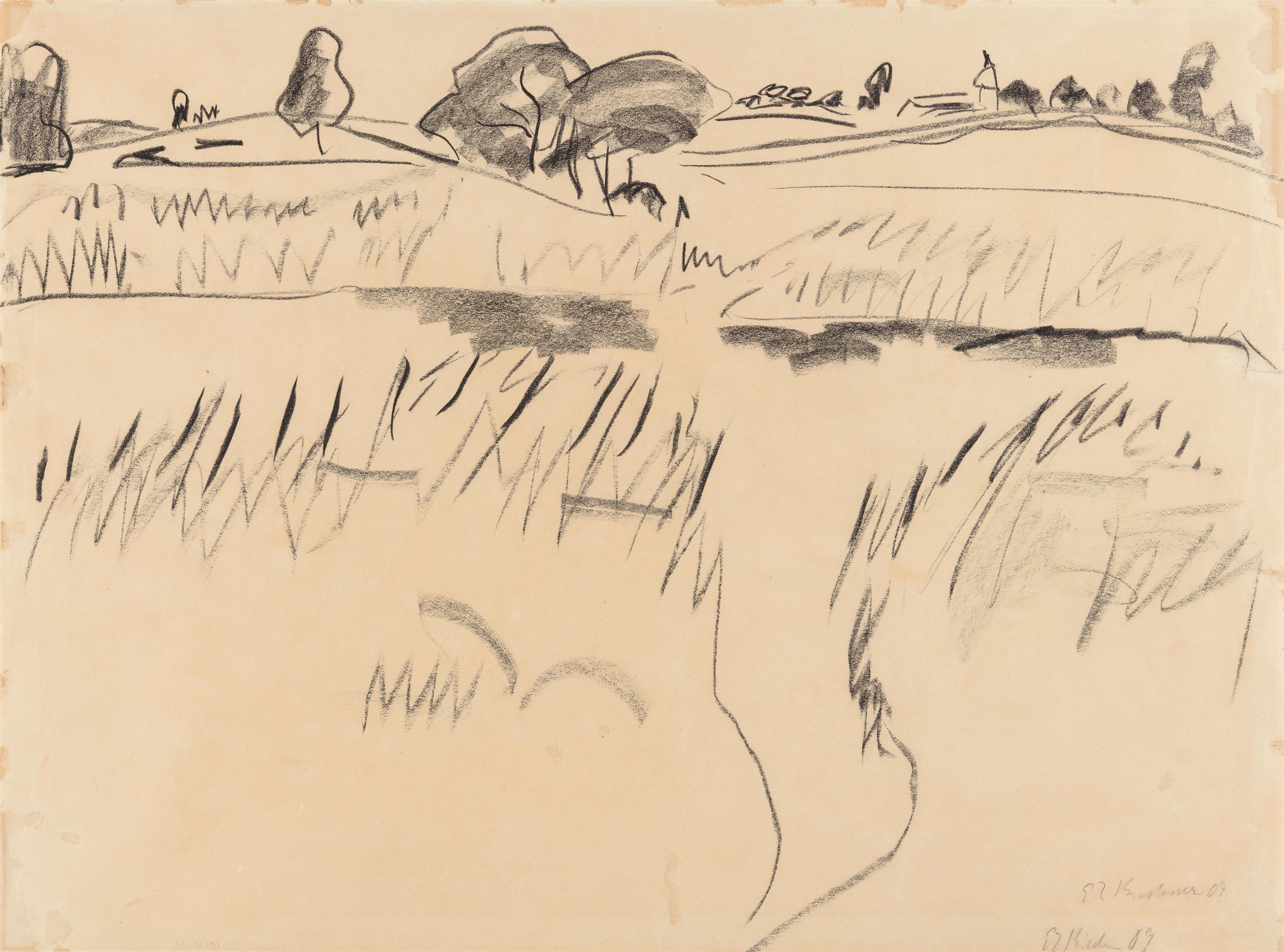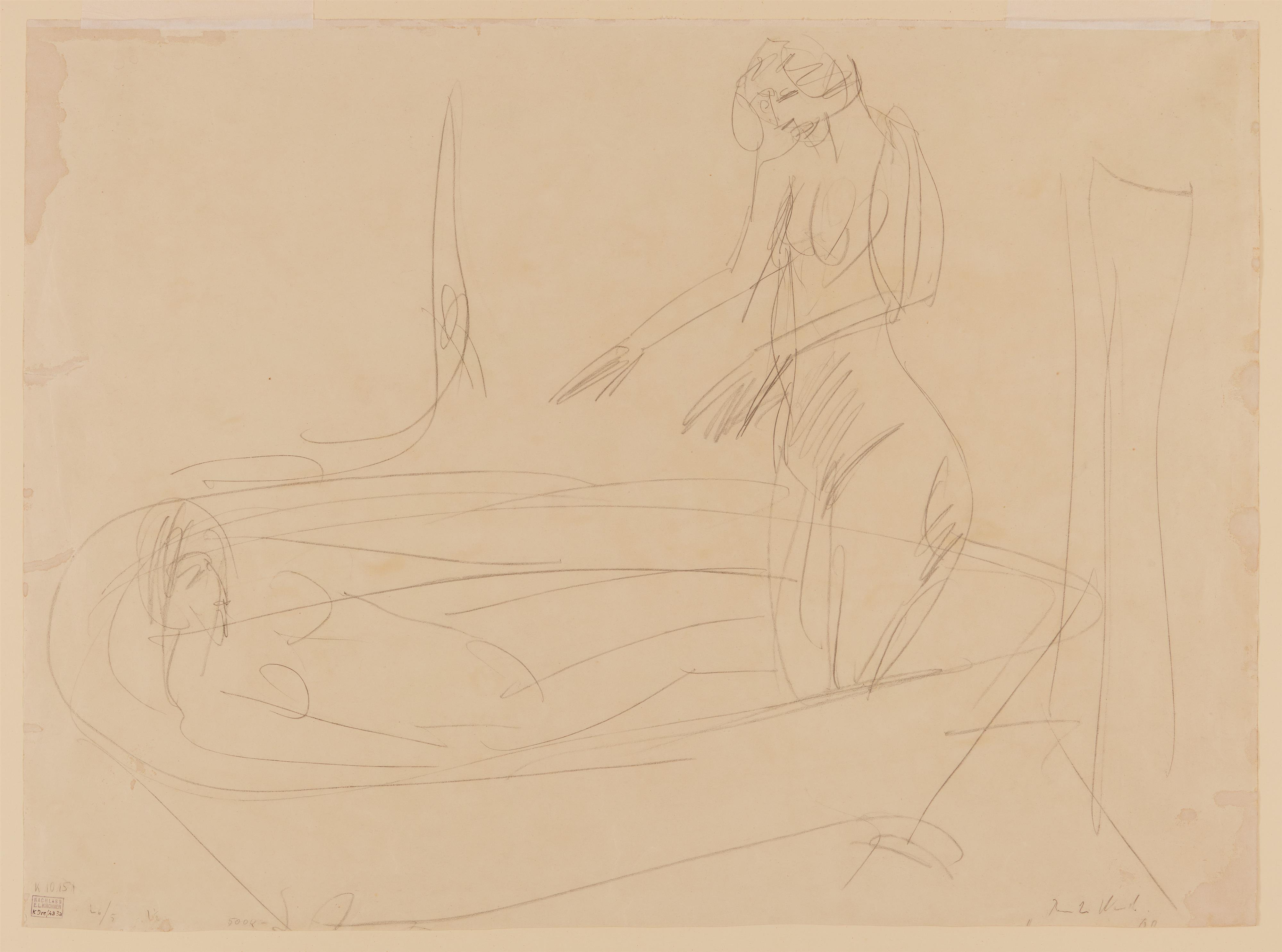Ernst Ludwig Kirchner
Schilflandschaft (An den Moritzburger Teichen).
Verso: Akte in Wanne
1909 / Circa 1912
Charcoal drawing resp. pencil drawing on chamois-coloured paper. 66.5 x 90 cm. Framed under glass. Signed and dated 'Kirchner 09' twice lower right. Verso illegibly inscribed and dated '09' [trimmed]. - Stamp "NACHLASS E.L. KIRCHNER" (Lugt 1570 b) verso, therein inscribed "K Dre/Aa 3a". - With insignificant traces of use, few shorter closed marginal tears and weak traces of moisture at the margins. The lower margin minimally trimmed.
North of Dresden, an expansive landscape filled with shallow ponds spreads out around Schloss Moritzburg: these ponds were made long ago to provide fish for the king’s table in nearby Dresden. Later an expansive recreation area emerged there, featuring bathing establishments that were open to everyone. In 1909 Ernst Ludwig Kirchner captured one of these – situated next to Dippelsdorf Pond – in a painting defined by its luminous red. Away from this “official” place to go to the beach, the “Brücke” painters had soon already begun with their secret and secluded “Paradise”. Here, concealed behind bushes and trees, Erich Heckel and Max Pechstein created watercolours of the wonderful child model “Franzi”. Kirchner’s sketchbooks became filled with captivatingly spontaneous drawings of nudes – and this is where he created the present, unusually large, pencil drawing: its expansive view extends from the reedy shore, across the surface of the water and on to the opposite shore, with Schloss Scharfenberg and the “Sorgenfrei” villa.
What appears so peaceful is filled with a call for “freedom to live and move”. Inconspicuously and nonetheless entirely intentionally contradicting what the academies taught as inalterable rules for constructing a composition, Kirchner has drawn the “heavy” on top and the “light” below it. Broad strokes of charcoal establishing two-dimensional shapes in the upper third of the image stabilise this unheard-of distribution of compositional weight, which increasingly dissipates towards the bottom and finally dissolves in a jumble of airy reeds. Everything is hovering. The “Brücke” revolution has literally stood the world “on its head”. This sheet is extraordinary in every regard, consolidating and codifying the innovations of the “Brücke” – and, here, those of Ernst Ludwig Kirchner – in its bold decisions.
The reverse side presents a design sketch the artist further developed in a painting from 1915 (Gordon 444 b). There is already a drawing from around 1912 – now owned by the Kirchner Museum Davos – which shows two nudes in a bath and not, as is otherwise usually the case, in a tub.
Gerd Presler
Certificate
We would like to thank Gerd Presler, Weingarten, for the scientific advice.
Provenance
Art trade, Berlin; Private collection, Switzerland




